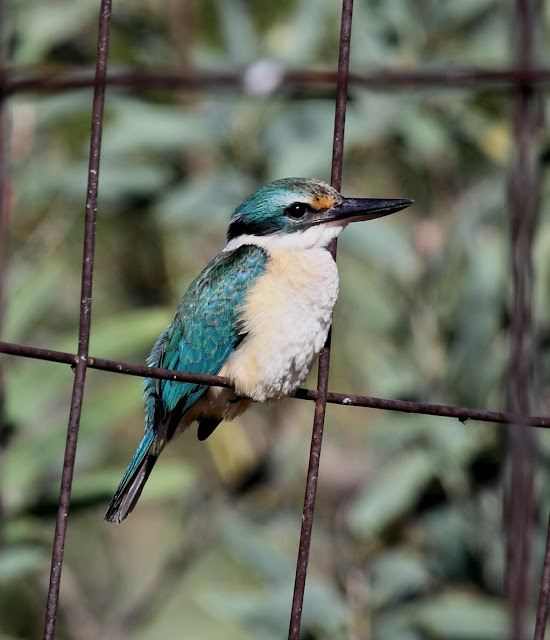 |
| Mistletoebird Dicaeum hirundinaceum, doing what it does best - scoffing mistletoe. |
Lots of folks around town are putting their decorations up so it made sense that our bird picture this week should be something a bit festive. This brightly coloured bauble is a Mistletoebird. This is the male bird, and with such bright colours and a piercing call, they are usually not too difficult to find.
As the name suggests, the bird has a strong association with the mistletoe plant. This is a partly parasitic plant that is very common in tree around Alice Springs. Have you ever noticed a clump of leaves in a tree that don’t seem to match the rest of the tree? That’s mistletoe. There are a few different species but they usually have these little berries that Mistletoebirds just can’t resist. In the action of expelling the undigested seed the bird leaves it lodged in the tree’s bark and propagates the next generation of mistletoe – a satisfying symbiosis.
Bit of bad news this week with feral dogs again appearing at the sewage ponds in Alice Springs. Power & Water have had to take the tough, but very wise, decision of closing this facility to birdwatching access until they can be removed. It is hoped that this may be within a couple of weeks, but it will depend on the success of the control program – I’ll keep you posted.
I was lucky enough to visit Helen Miller this week who has a very happy family – she has had as many as 7 Boobooks roosting in her yard at one time over the last few weeks. The Western Bowerbird around my place has taken to imitating a Channel-billed Cuckoo that has taken up residence in the area which has made for some interesting alarm calls. Lastly, Crimson Chats have been reported just 20kms down the Old South Road.
Happy birding!
birdscentral@gmail.com



















